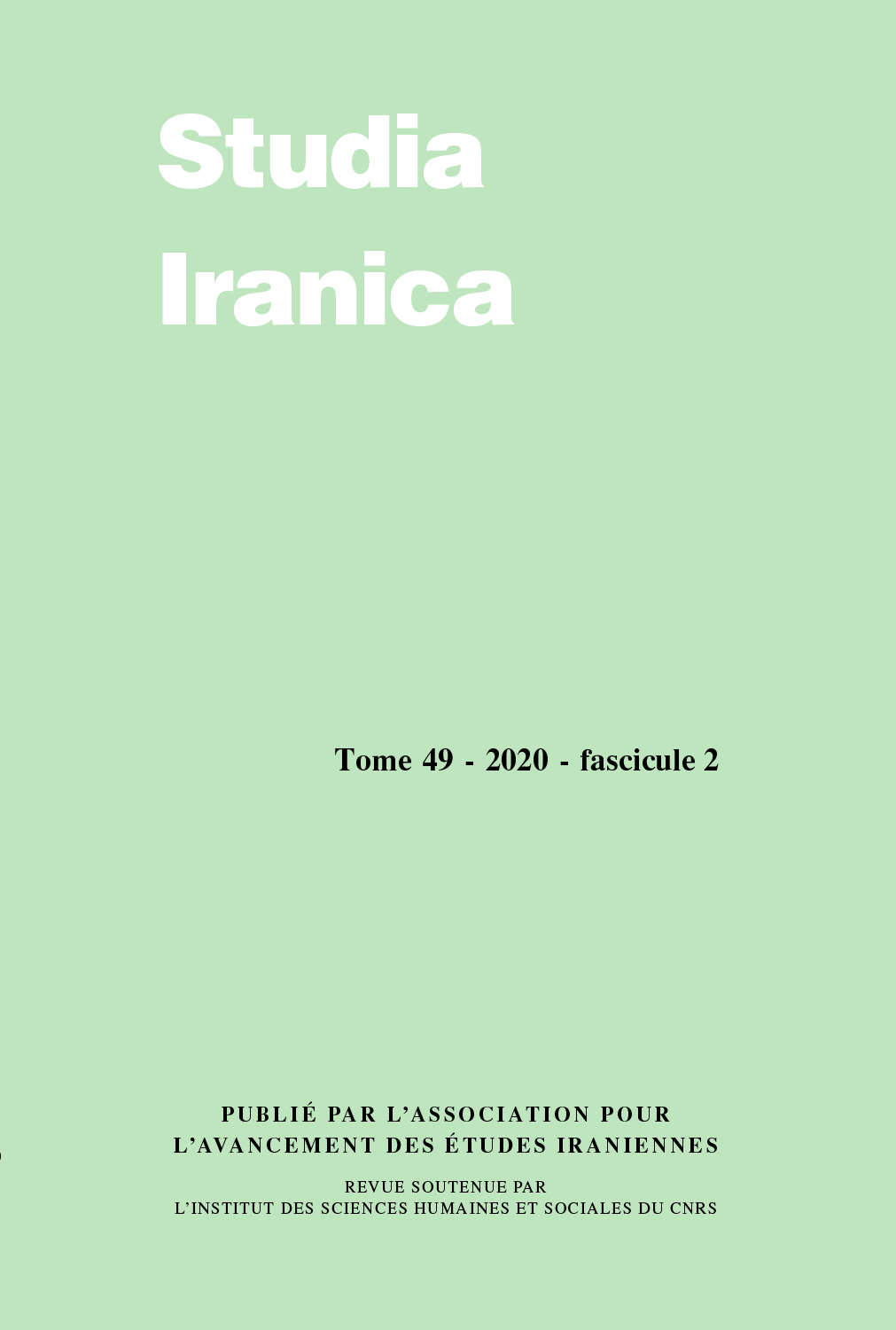 previous article in this issue previous article in this issue | next article in this issue  |

Preview first page |
Document Details : Title: Sweet Orange and Mandarin in Iran and India (14th-19th Centuries) with a Glimpse at Europe Author(s): MOHEBBI, Parviz Journal: Studia Iranica Volume: 52 Issue: 1 Date: 2023 Pages: 39-77 DOI: 10.2143/SI.52.1.3294137 Abstract : It has been generally accepted that it is with the Portuguese that the sweet orange and its name (porteqāl) were first introduced into Iran. However, as we shall try to show here, the introduction of 'sweet orange' in Iran is more complicated than this general understanding. In fact, the arrival of the name porteqāl and the sweet orange itself, undertook two different paths in two different periods of time. On the other hand some citrus fruits recognized as sweet oranges by different European travelers could be mandarins of India or China known in Iran as nārengi. Il est généralement admis que c’est avec les Portugais que l’orange douce et son nom (porteqāl) ont été introduits pour la première fois en Iran. Cependant, comme nous essaierons de le montrer ici, l’introduction de «l’orange douce» en Iran est plus compliquée de ce que l’on admet généralement. En fait, l’arrivée du nom porteqāl et de l’orange douce elle-même, a pris deux chemins différents à deux époques différentes. Par contre certains agrumes reconnus comme oranges douces par différents voyageurs européens pourraient être des mandarines d’Inde ou de Chine, connues en Iran sous le nom de nārengi. |
|


